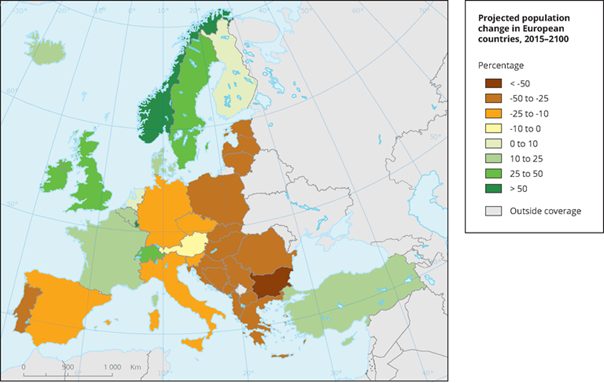The process of population ageing is determined primarily by trends in fertility rates and secondarily by mortality rates. Any population with a long history of high fertility has a “young” age structure, similar in its general features to the present age structure for the group of least developed countries. The average age of the population starts to rise when fertility rates decline.
Demographic changes are among the most important challenges facing societies, labour markets and economies, especially in conjunction with other global processes such as climate and technological change. The demographic changes we see today are, to a large extent, the result of earlier processes, whose social and economic implications are just starting to be felt. The trends we can observe relate to long term features, such as a significant decline in the fertility rate and increased life expectancy. It is of increasing importance for governments to design and implement policies to reduce the negative effects of these demographic changes.
The challenges for social inclusion of ageing populations also calls for a re-evaluation of the role of older people and a new solidarity between the generations. By 2030, it is estimated that two active people (age range of 15-65) will have to take care of one inactive person (aged +65) (World Economic Forum, 2007).
Demographic processes should be considered over a long-term perspective. For example, changes in populations sixty years ago determine the current situation, and the current state will shape the future of societies. On the other hand, demographic behaviours (marriages, births, migration etc.) are influenced by current social, economic and cultural circumstances, such as: labour market fluctuations; living conditions; public policy supporting families; and public infrastructure. Thus, public policy may, to some extent, influence the demographic situation or, at least, highlights the challenges created by it.
Depopulation and population ageing will affect regional policy development at all levels, shaping labour markets, consumption, education, and family life. (OECD, 2013)
The map shows the projected change in total population in the EEA and western Balkan countries, 2015 to 2100

Resource: https://www.eea.europa.eu/data-and-maps/figures/projected-population-change-in-european